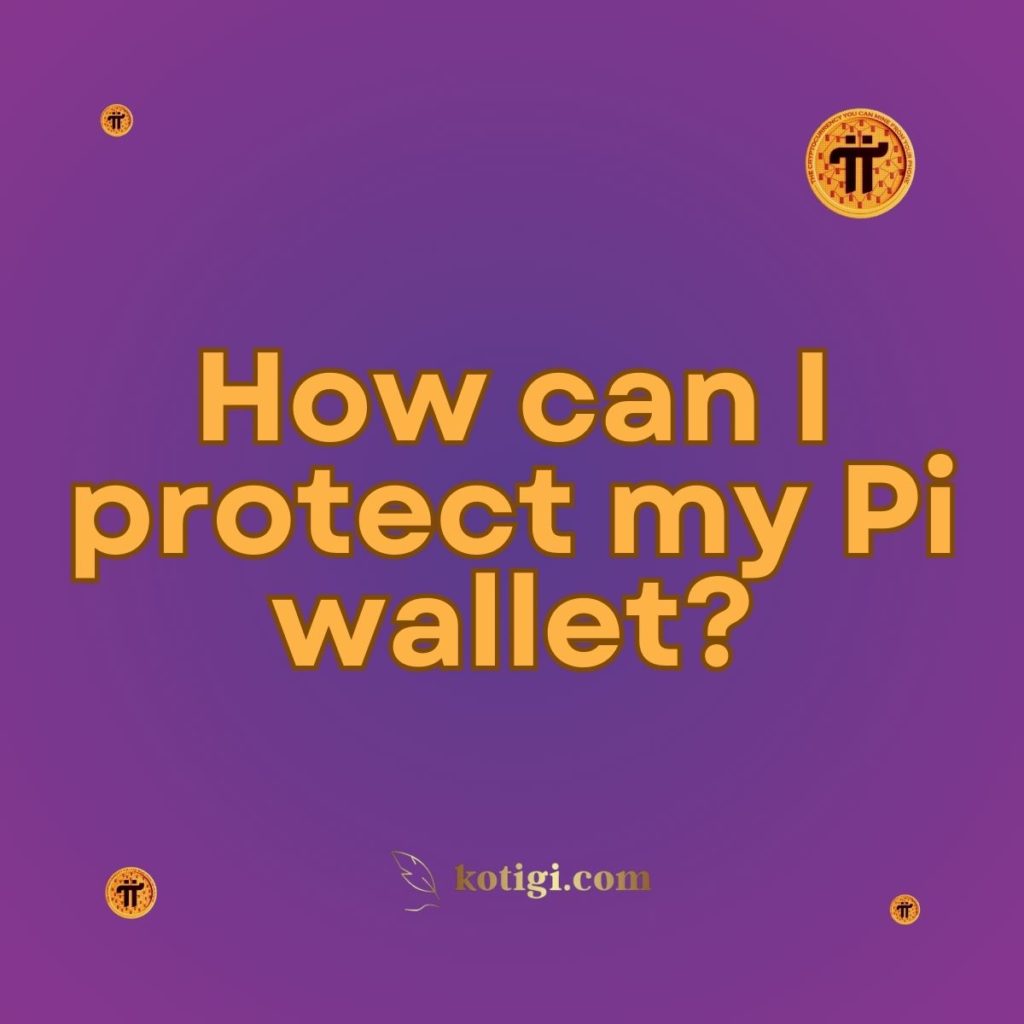
How can I protect my Pi wallet?
Protecting your Pi Wallet is crucial to ensuring the security of your Pi coins and personal information. Here’s a comprehensive guide on how to safeguard your Pi Wallet:
1. Secure Your Seed Phrase
1.1. What is a Seed Phrase?
The seed phrase is a series of 12-24 words generated during the setup of your Pi Wallet. It acts as a master key, allowing you to recover your wallet if you lose access to your device or forget your password.
1.2. Store It Securely:
Write down your seed phrase on paper and store it in a secure location, such as a safe or a lockbox. Avoid storing it digitally (e.g., in a text file, email, or cloud storage) as this can be vulnerable to hacking or accidental deletion.
1.3. Don’t Share It:
Never share your seed phrase with anyone. If someone has access to your seed phrase, they can gain full control over your Pi Wallet and its contents.
2. Use a Strong Password
2.1. Create a Complex Password:
When setting up your Pi Wallet, choose a strong, unique password. A good password should be at least 12 characters long and include a mix of letters, numbers, and special characters.
2.2. Avoid Reusing Passwords:
Don’t reuse passwords from other accounts. If one of your other accounts is compromised, it could put your Pi Wallet at risk if you’ve used the same password.
2.3. Store Passwords Safely:
Consider using a reputable password manager to store your Pi Wallet password securely. This reduces the risk of forgetting your password and keeps it protected from unauthorized access.
3. Enable Additional Security Features
3.1. Two-Factor Authentication (2FA):
If available, enable two-factor authentication (2FA) for your Pi Wallet. 2FA adds an extra layer of security by requiring a second form of verification (like a text message or authentication app) in addition to your password.
3.2. Biometrics:
If your device supports it, consider using biometric authentication (such as fingerprint or facial recognition) to access your Pi Wallet. This adds another layer of protection, making it harder for someone else to access your wallet.
4. Keep Your Device Secure
4.1. Regular Updates:
Keep your device’s operating system and the Pi Network app updated. Updates often include security patches that protect against new threats.
4.2. Use Antivirus Software:
Install and maintain reputable antivirus software on your device to protect against malware, spyware, and other threats that could compromise your Pi Wallet.
4.3. Avoid Public Wi-Fi:
Avoid accessing your Pi Wallet over public Wi-Fi networks, which can be less secure. If you must use public Wi-Fi, consider using a VPN (Virtual Private Network) to encrypt your connection.
5. Be Cautious of Phishing and Scams
5.1. Recognize Phishing Attempts:
Be wary of emails, messages, or websites that ask for your Pi Wallet credentials or seed phrase. Scammers often use phishing techniques to trick users into revealing sensitive information.
5.2. Verify Authenticity:
Always double-check the URLs and email addresses of any communication related to your Pi Wallet. Ensure you are interacting with the official Pi Network channels and not a fake or lookalike site.
5.3. Don’t Click Untrusted Links:
Avoid clicking on links from unknown sources. Scammers may use malicious links to gain access to your device or trick you into providing your Pi Wallet information.
6. Regularly Monitor Your Wallet
6.1. Check Transactions:
Regularly review your Pi Wallet’s transaction history to ensure that all transactions are legitimate. If you notice any unauthorized transactions, take immediate action to secure your wallet.
6.2. Stay Informed:
Keep yourself updated on the latest security practices and potential threats. Join official Pi Network forums or communities to stay informed about any security updates or alerts.
7. Backup and Recovery
7.1. Regular Backups:
Regularly back up your Pi Wallet, especially if you make changes to it. This ensures that you have a recent copy of your wallet in case of data loss or device failure.
7.2. Test Recovery Process:
Periodically test the wallet recovery process using your seed phrase to ensure that you can successfully restore your wallet if needed. This practice can help you avoid potential issues during an actual recovery.
Conclusion
Protecting your Pi Wallet requires a combination of secure practices, vigilance, and the use of available security features. By securing your seed phrase, using strong passwords, keeping your device protected, and staying alert to potential threats, you can significantly reduce the risk of unauthorized access to your wallet. Regularly monitoring your wallet and staying informed about security developments will help ensure that your Pi coins remain safe.





